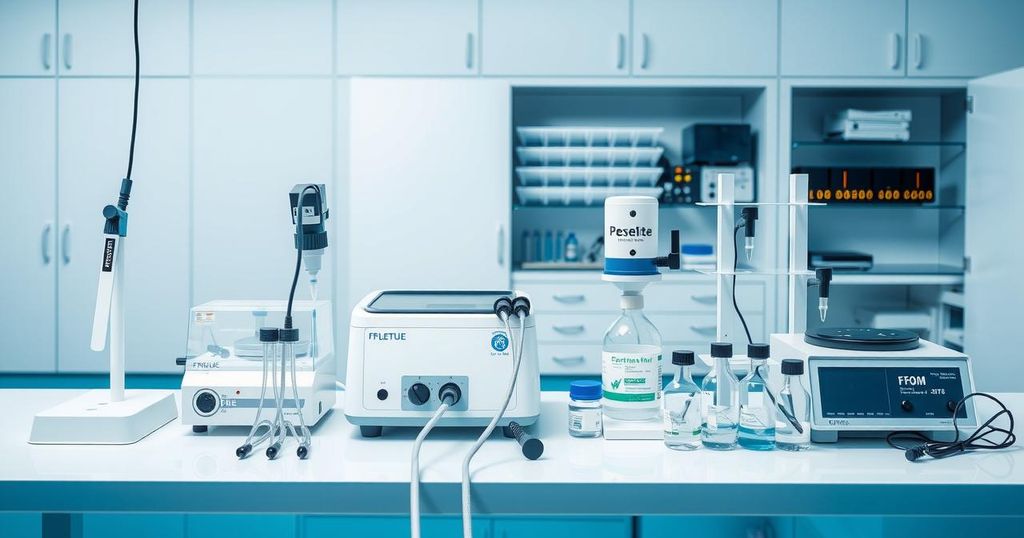German and US Companies Target India’s Semiconductor Assembly and Test Market
German and US semiconductor firms are exploring significant OSAT opportunities in India, with Infineon partnering with CDIL Semiconductors to potentially enhance their presence. Onsemi is also interested in leveraging local partnerships for expansions. Experts urge the Indian semiconductor mission to strategically support OSAT facilities and establish foundational manufacturing to ensure a thriving sector.
Recent developments indicate that German and United States companies are eyeing significant opportunities in India’s Outsourced Semiconductor Assembly and Test (OSAT) sector. Several major projects are underway, including Tata Group’s substantial Rs 27,120 crore facility in Assam, CG Power and Industrial Solutions’ Rs 7,584 crore unit, and Kaynes Technology India’s Rs 3,307 crore project in Gujarat’s Sanand.
Infineon is actively considering establishing an OSAT presence in India. Recently, its Asia-Pacific branch signed a contract with Mohali-based CDIL Semiconductors to supply bare semiconductor wafers, which CDIL will use to assemble power chipsets. Infineon’s collaborative efforts may be seen as a strategic approach to solidify its OSAT capabilities in India.
The company is recognized for its expertise in power semiconductors and aims to expand into automotive and other sectors. It is expected that this may lead to additional partnerships to enhance their Indian operations. In a recent statement, Infineon noted the global evaluation of potential partnerships but withheld details on specific future projects while confirming no immediate plans for its own manufacturing in India.
Meanwhile, Arizona-based Onsemi is also pursuing opportunities in India’s OSAT scene. It intends to leverage its brand by collaborating with Indian partners to fund new facilities, while Onsemi will provide the necessary technical expertise. A representative from Onsemi confirmed there is no recent information to share regarding their plans.
Infineon, reported to be one of Germany’s largest semiconductor firms, indicated a revenue of approximately $15 billion for the 2024 fiscal year. Notably, despite a currently weak market, they emphasize the requirement for competitive manufacturing capacity for sustainable growth in the future.
In contrast, Onsemi is experiencing operational challenges and recently announced layoffs of about 2,400 employees due to restructuring after reporting $7 billion in annual revenue, down from $8.2 billion in 2023. They are actively pursuing new revenue sources, including a significant proposed acquisition of Allegro MicroSystems for $6.9 billion.
Industry experts argue that the Indian semiconductor mission (ISM) must adopt data-driven strategies to decide on subsidization levels for OSAT facilities. The first phase of ISM provided a 50% capital expenditure subsidy for OSAT units, complemented by additional incentives from various states. Analysts emphasize the necessity for clarity on ongoing incentives amid anticipated reliance on imported processed wafers up to 2030.
Further prioritization towards establishing high-volume silicon fabs and additional commercial compound semiconductor fabs over OSAT centers is recommended in the second phase of the ISM policy. Encouragement for companies like Infineon in these ventures is essential to build a robust semiconductor ecosystem in India.
In summary, major companies such as Infineon and Onsemi are showing keen interest in India’s OSAT opportunities, reflecting the region’s potential growth in the semiconductor sector. Collaboration with local partners is deemed vital for successful ventures, while industry experts stress the need for strategic planning and support from the Indian semiconductor mission to ensure sustainable growth. The focus should also tilt towards establishing foundational manufacturing capabilities rather than solely on OSAT facilities for a balanced semiconductor ecosystem.
Original Source: m.economictimes.com




Post Comment